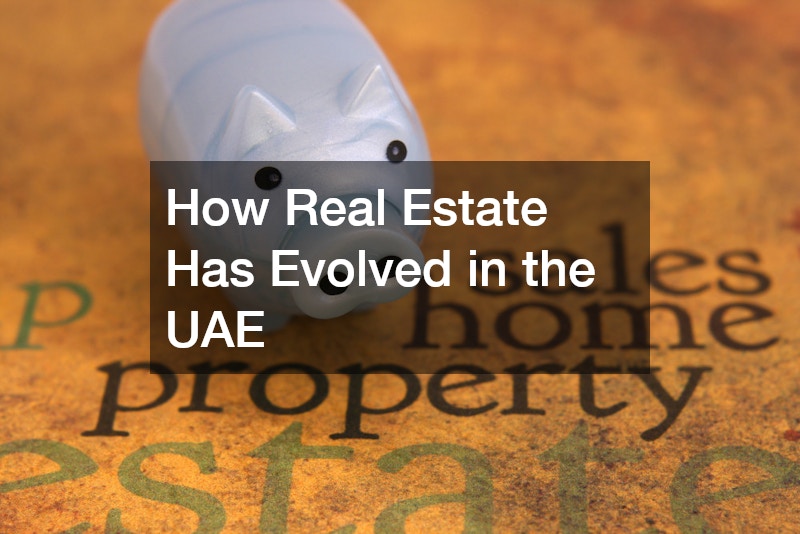
The real estate landscape in the United Arab Emirates (UAE) has undergone an incredible transformation in recent decades. Once a region characterized by small-scale developments, the UAE has risen to contain some of the world’s most ambitious real estate projects. At the heart of this transformation lies visionary leadership and an open economic policy that attracts both local and international investors.
Fostering a business-friendly environment, the UAE has implemented regulations that facilitate property ownership for foreigners, a move that has further fueled growth. The real estate market in the UAE is shaped by high demand, continuous innovation, and significant capital investments.
These factors contribute to making the UAE a global hub for real estate, drawing in stakeholders from across the world.
Furthermore, the country’s strategic location and thriving tourism sector play a crucial role in this growth. The combination of all these factors has led to an ever-dynamic real estate sector, constantly evolving to meet modern needs. To understand this evolution, it’s essential to examine the various trends and key players that have shaped the real estate market in the UAE, including figures like Kabir Mulchandani.
The Role of Megaprojects
One of the most striking features of the UAE’s real estate evolution is the prevalence of megaprojects. Developments like the Palm Jumeirah, the Burj Khalifa, and the World Islands exemplify the scale and ambition of projects in the UAE. These developments are not only architectural marvels but also serve as symbols of the UAE’s commitment to building a world-class infrastructure.
Many of these megaprojects are driven by the desire to attract luxury tourism, business travel, and international investors. They are often situated in prime locations that offer stunning views and unprecedented amenities. The presence of these properties has transformed the UAE into a luxury destination, appealing to the wealthiest investors and tourists globally.
The scale and scope of these projects require significant investment and planning, often involving collaborations with top architects and international firms. Beyond the luxurious facade, these developments also focus on sustainability, integrating green spaces and energy-efficient technologies. As the UAE looks to the future, such projects continue to redefine its skyline and economic landscape.
Impact of Technology and Innovation
Technology and innovation have played a crucial role in the evolution of real estate in the UAE. The adoption of smart technologies within real estate projects has allowed developers to offer intelligent living spaces that cater to modern-day needs. Innovations like smart home systems, artificial intelligence, and IoT-based management systems have become increasingly prevalent.
The use of digital platforms has also transformed how real estate transactions are conducted, making the process more efficient and transparent. Virtual reality tours and digital contracts streamline the buying experience, allowing investors worldwide to participate in the UAE market from a distance. This technological edge has added value to the properties while improving customer experience.
Additionally, sustainability has become a key focus, with developers incorporating eco-friendly features to meet global standards. Buildings are now constructed using energy-efficient materials and sustainable energy sources, minimizing their carbon footprint. This integration of technology and innovation not only enhances property value but also aligns with global efforts towards a more sustainable future.
Influential Figures in UAE Real Estate
Key figures have significantly influenced UAE’s real estate landscape, shaping its direction and growth. Business leaders like Kabir Mulchandani have played pivotal roles through their visionary approaches and strategic investments. With a keen eye for opportunities, they have developed properties that attract attention on a global scale.
Their success stories often revolve around leveraging the UAE’s strategic advantages, such as favorable business policies and a thriving economy. These leaders have blended traditional real estate models with innovative practices, leading to the creation of iconic developments. The focus on luxury, sustainability, and technology is a common theme among these influential figures.
As role models and pioneers, they have inspired future generations of developers and entrepreneurs, reinforcing the UAE’s position as a leader in real estate innovation. Their endeavors continue to draw international interest, contributing to the UAE’s robust economic growth. Celebrated for their contributions, figures like Kabir Mulchandani remain at the forefront of real estate evolution in the region.
Conclusion
The evolution of real estate in the UAE is a remarkable narrative of ambition, innovation, and strategic foresight. From the construction of megaprojects to the adoption of modern technologies, every aspect of this sector reflects the UAE’s determination to remain at the cutting edge. Key figures like Kabir Mulchandani have helped shape the industry, steering it towards a future of sustainable growth and development.
As the country continues to grow, the real estate market is expected to evolve in response to new trends and demands. Future projects emphasize not just luxury, but also sustainability and smart living, catering to a diverse global audience. With such constant evolution, the UAE stays poised to maintain its status as a top destination for real estate investment and development.
Ultimately, the transformation of the UAE’s real estate sector is more than just a story of buildings; it’s a testament to the country’s vision and resilience. As it embraces the future, the UAE will continue to inspire the world with its groundbreaking developments. This journey reflects a blend of tradition and modernity, setting a benchmark for real estate success globally.
.




